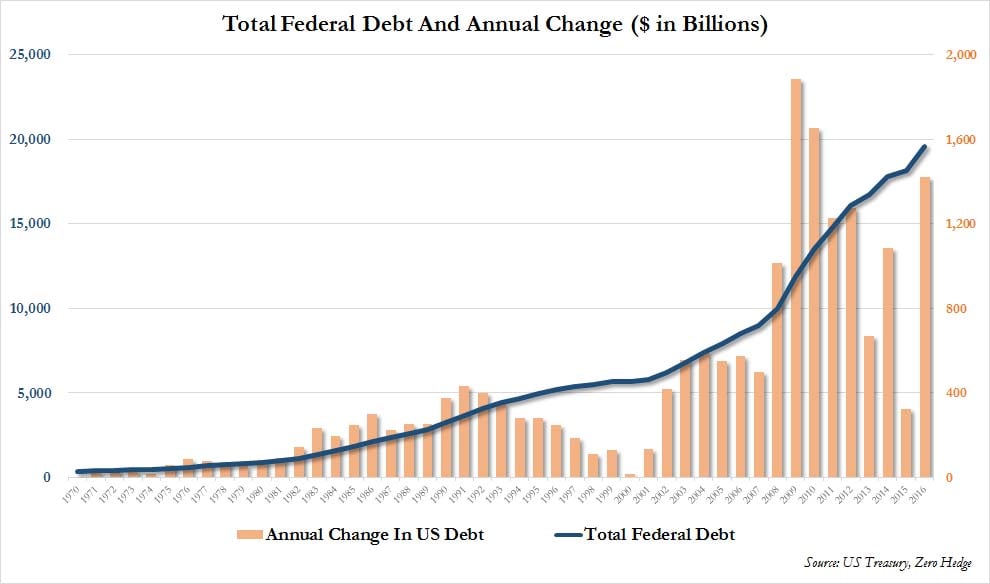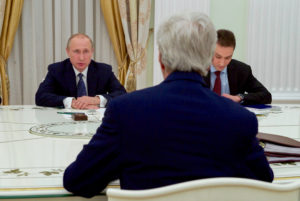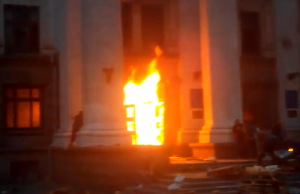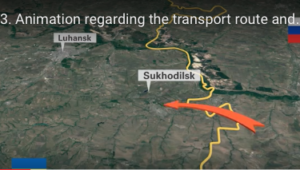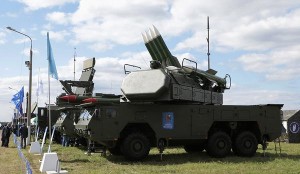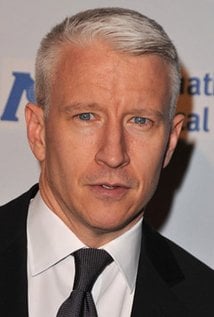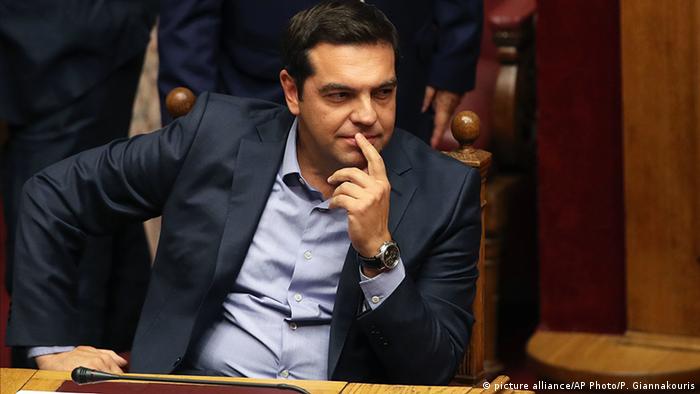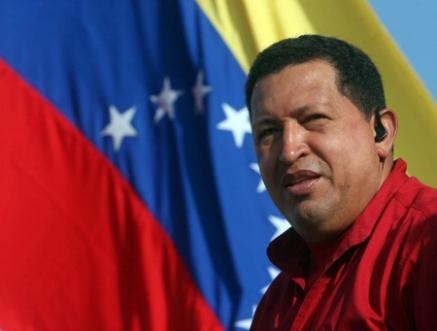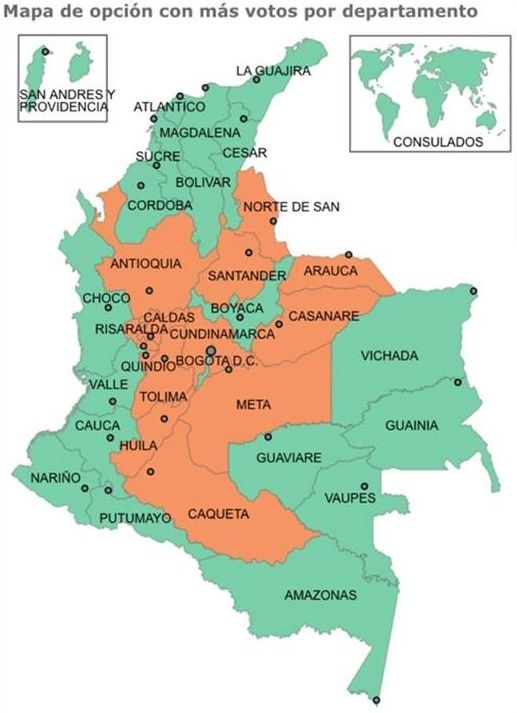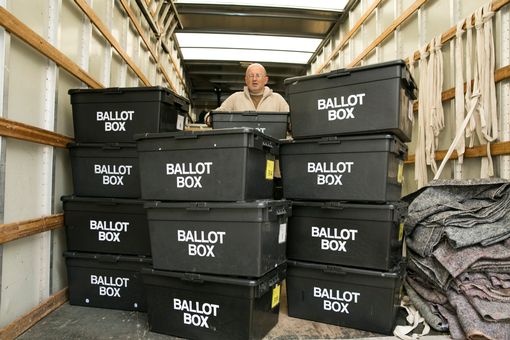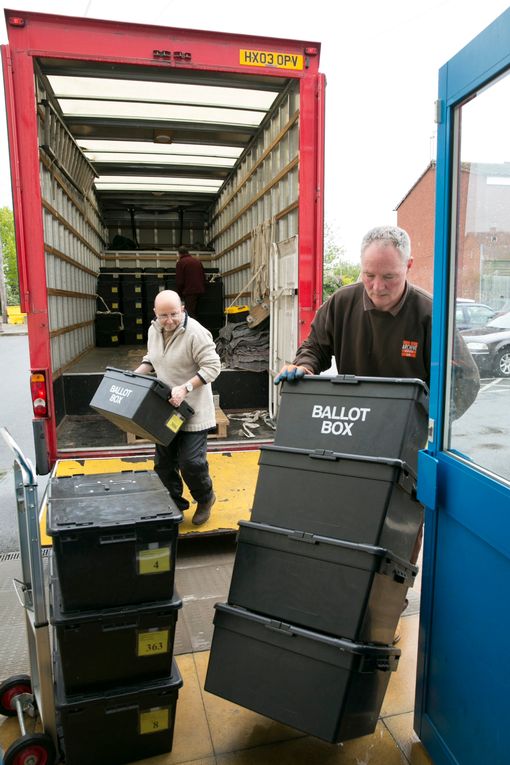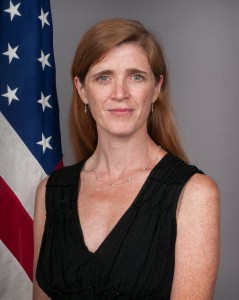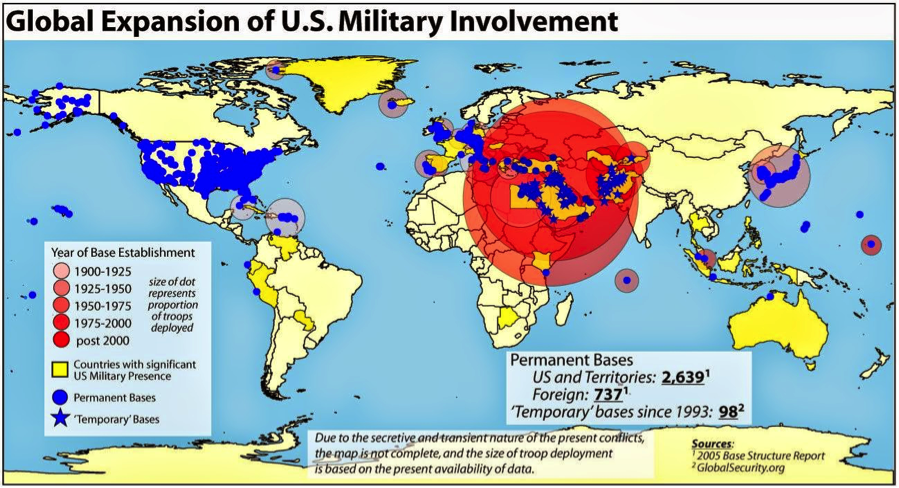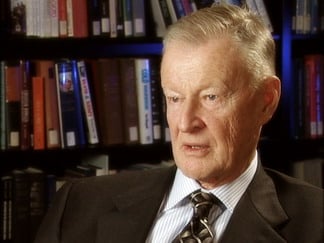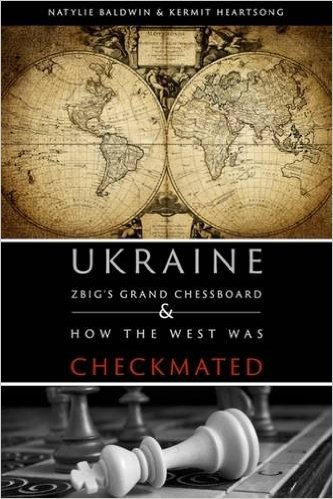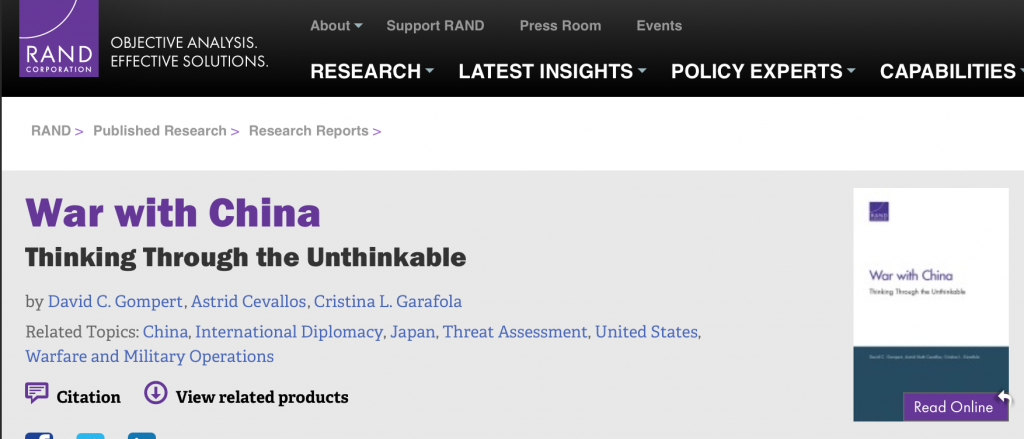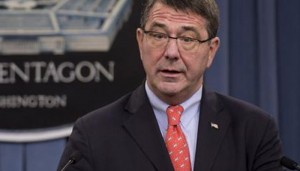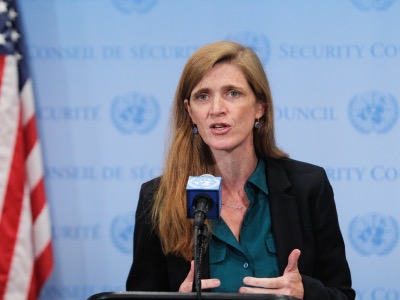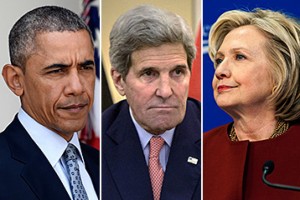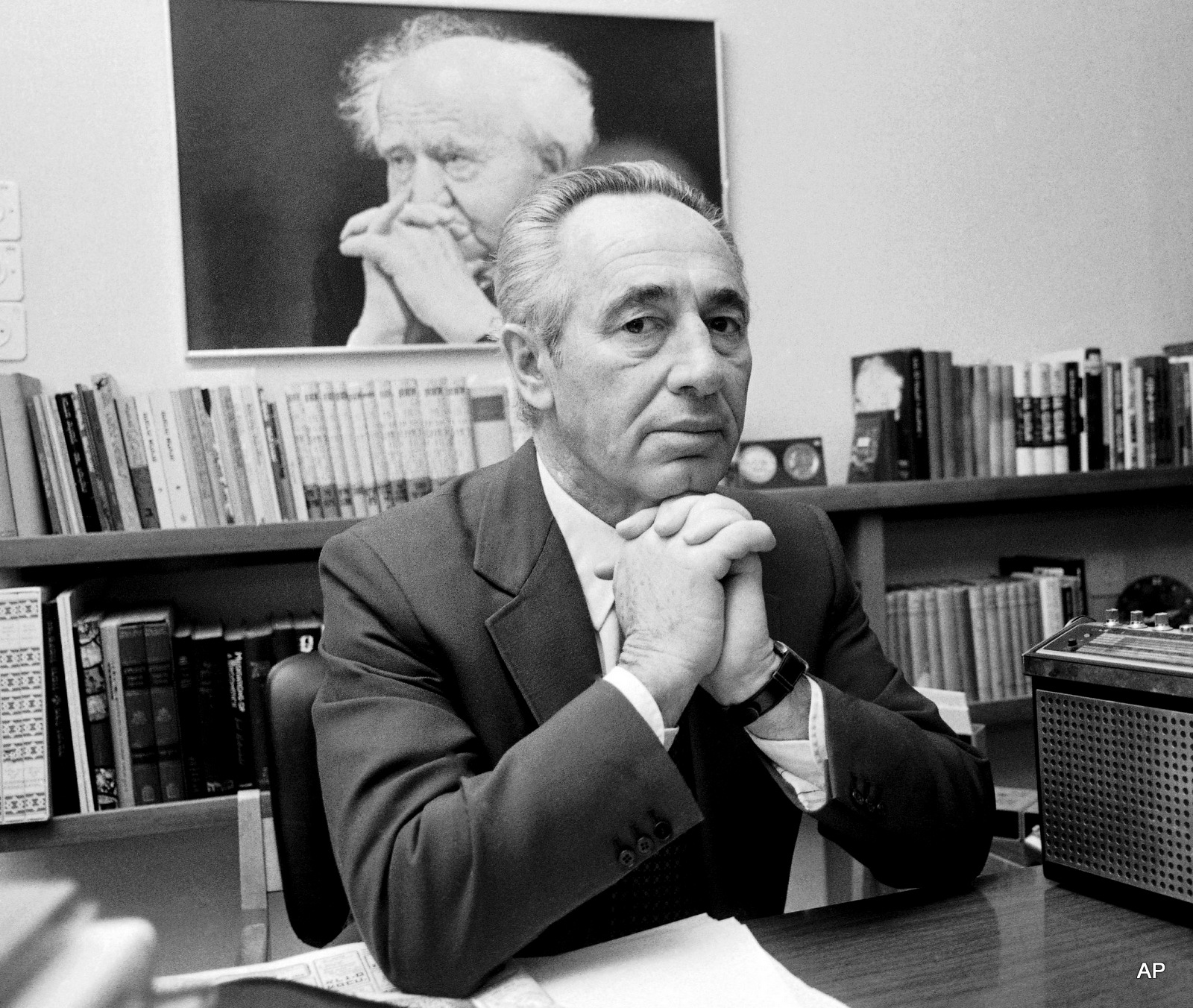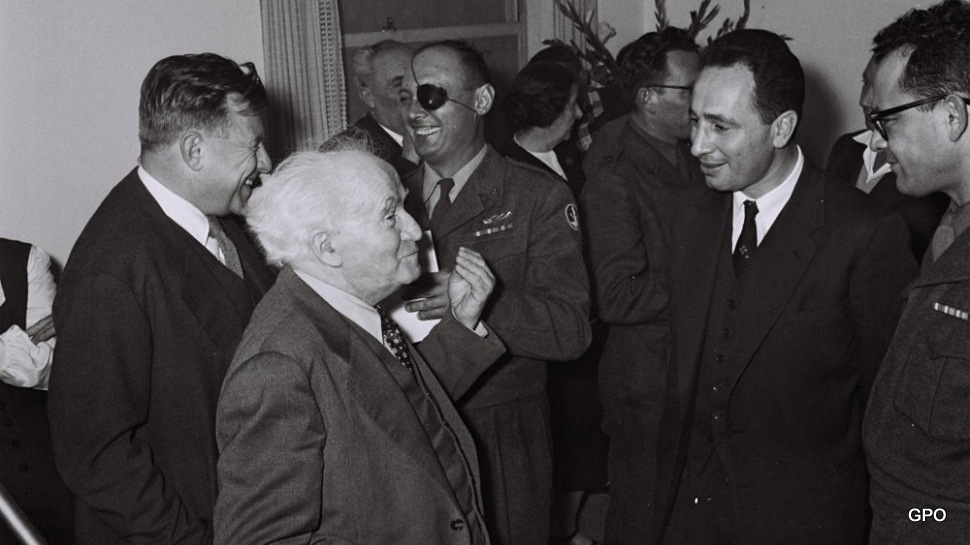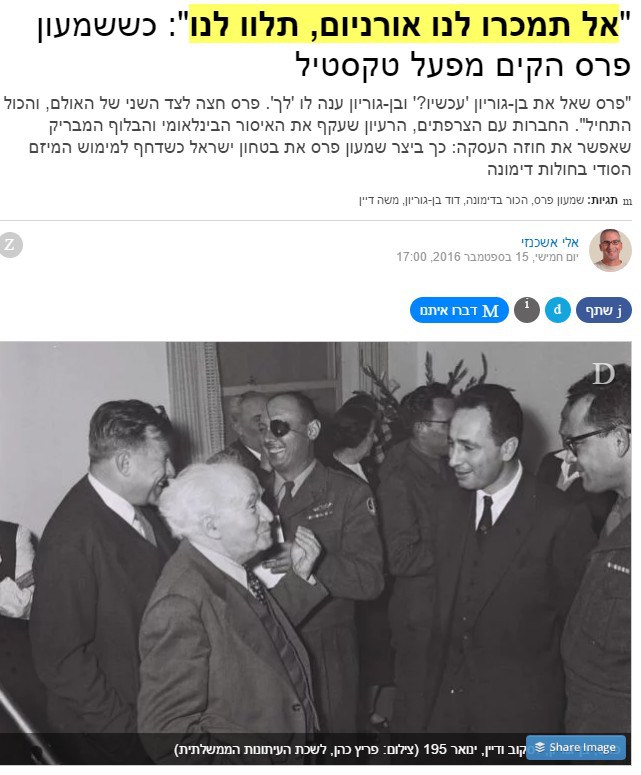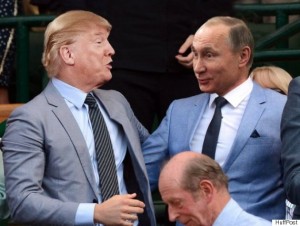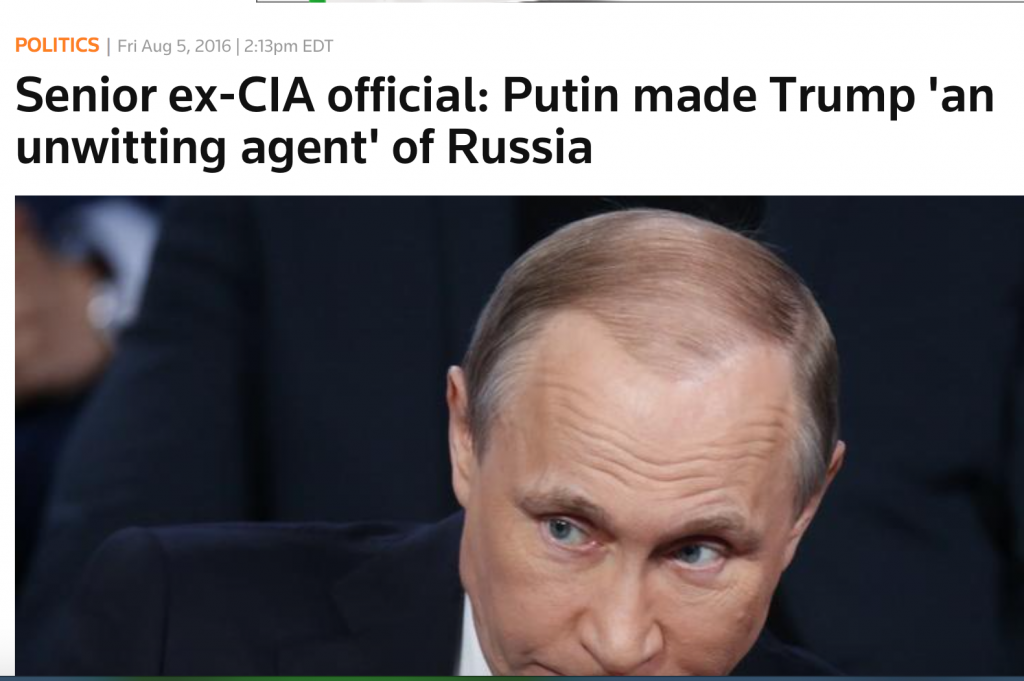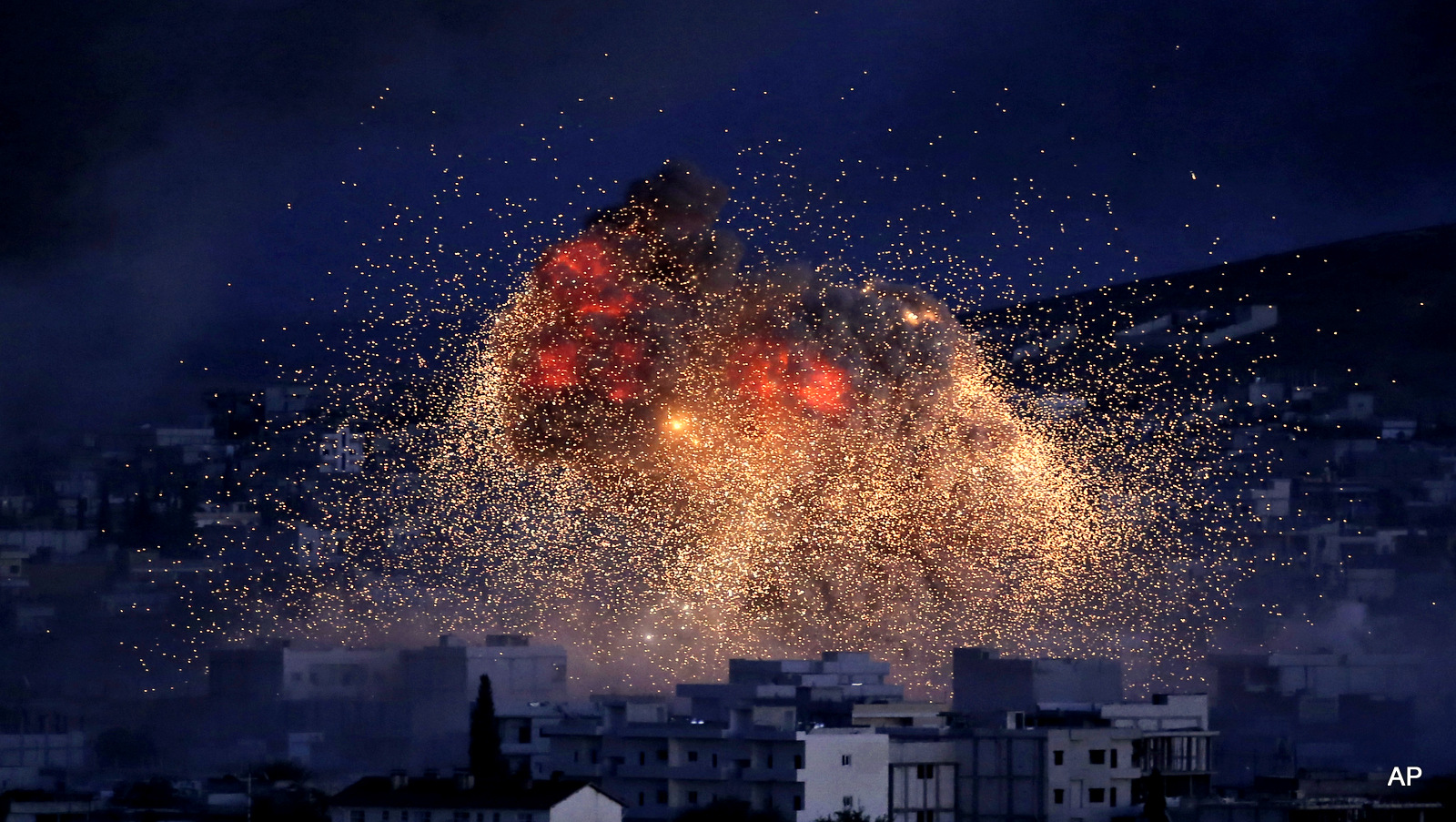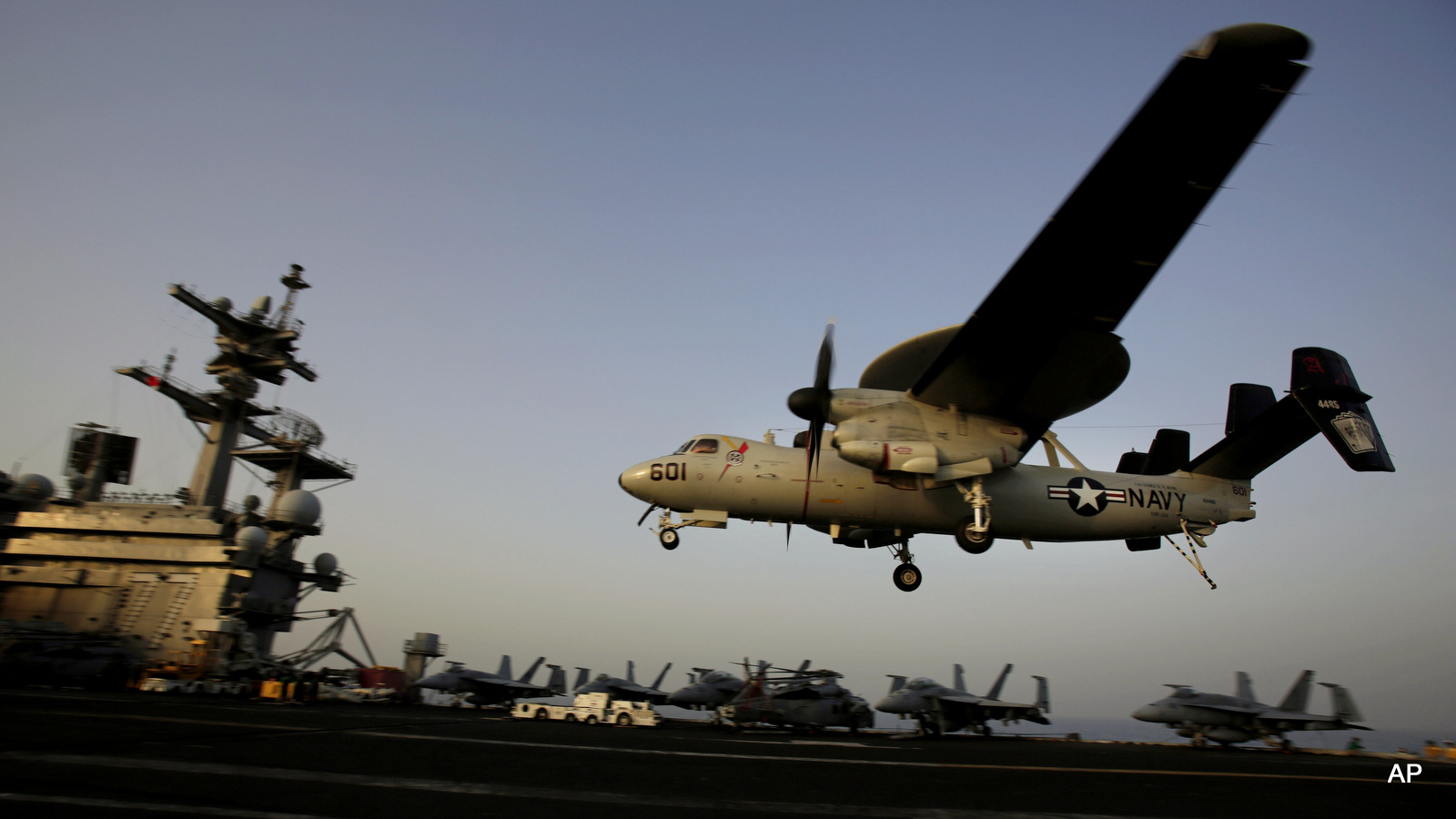Posing as a non-political solidarity organization, the Syria Campaign leverages local partners and media contacts to push the U.S. into toppling another Middle Eastern government.
On September 30, demonstrators gathered in city squares across the West for a “weekend of action” to “stop the bombs” raining down from Syrian government and Russian warplanes on rebel-held eastern Aleppo. Thousands joined the protests, holding signs that read “Topple Assad” and declaring, “Enough With Assad.” Few participants likely knew that the actions were organized under the auspices of an opposition-funded public relations company called the Syria Campaign.
By partnering with local groups like the Syrian civil defense workers popularly known as the White Helmets, and through a vast network of connections in media and centers of political influence, The Syria Campaign has played a crucial role in disseminating images and stories of the horrors visited this month on eastern Aleppo. The group is able to operate within the halls of power in Washington and has the power to mobilize thousands of demonstrators into the streets. Despite its outsized role in shaping how the West sees Syria’s civil war, which is now in its sixth year and entering one of its grisliest phases, this outfit remains virtually unknown to the general public.
The Syria Campaign presents itself as an impartial, non-political voice for ordinary Syrian citizens that is dedicated to civilian protection. “We see ourselves as a solidarity organization,” The Syria Campaign strategy director James Sadri told me. “We’re not being paid by anybody to pursue a particular line. We feel like we’ve done a really good job about finding out who the frontline activists, doctors, humanitarians are and trying to get their word out to the international community.”
Yet behind the lofty rhetoric about solidarity and the images of heroic rescuers rushing in to save lives is an agenda that aligns closely with the forces from Riyadh to Washington clamoring for regime change. Indeed, The Syria Campaign has been pushing for a no-fly zone in Syria that would require at least “70,000 American servicemen” to enforce, according to a Pentagon assessment, along with the destruction of government infrastructure and military installations. There is no record of a no-fly zone being imposed without regime change following —which seems to be exactly what The Syria Campaign and its partners want.
“For us to control all the airspace in Syria would require us to go to war against Syria and Russia. That’s a pretty fundamental decision that certainly I’m not going to make,” said Gen. Joseph Dunford, the chairman of the Joint Chiefs of Staff, at a hearing of the Senate Armed Services Committee this month.
While the military brass in Washington seems reluctant to apply the full force of its airpower to enforce a NFZ, The Syria Campaign is capitalizing on the outrage inspired by the bombardment of rebel-held eastern Aleppo this year to intensify the drumbeat for greater U.S. military involvement.
The Syria Campaign has been careful to cloak interventionism in the liberal-friendly language of human rights, casting Western military action as “the best way to support Syrian refugees,” and packaging a no-fly zone — along with so-called safe zones and no bombing zones, which would also require Western military enforcement — as a “way to protect civilians and defeat ISIS.”
Among The Syria Campaign’s most prominent vehicles for promoting military intervention is a self-proclaimed “unarmed and impartial” civil defense group known as the White Helmets. Footage of the White Helmets saving civilians trapped in the rubble of buildings bombed by the Syrian government and its Russian ally has become ubiquitous in coverage of the crisis. Having claimed to have saved tens of thousands of lives, the group has become a leading resource for journalists and human rights groups seeking information inside the war theater, from casualty figures to details on the kind of bombs that are falling.
But like The Syria Campaign, the White Helmets are anything but impartial. Indeed, the group was founded in collaboration with the United States Agency for International Development (USAID)’s Office of Transitional Initiatives, an explicitly political wing of the agency that has funded efforts at political subversion in Cuba and Venezuela. USAID is the White Helmets’ principal funder, committing at least $23 million to the group since 2013. This money was part of $339.6 million budgeted by USAID for “supporting activities that pursue a peaceful transition to a democratic and stable Syria” — or establishing a parallel governing structure that could fill the power vacuum once Bashar Al-Assad was removed.
Thanks to an aggressive public relations push by The Syria Campaign, the White Helmets have been nominated for the Nobel Prize, and have already been awarded the “alternative Nobel” known as the Right Livelihood Award. (Previous winners include Amy Goodman, Edward Snowden and Israeli nuclear whistleblower Mordechai Vanunu.) At the same time, the White Helmets are pushing for a NFZ in public appearances and on a website created by The Syria Campaign.
The Syria Campaign has garnered endorsements for the White Helmets from a host of Hollywood celebrities including Ben Affleck, Alicia Keyes and Justin Timberlake. And with fundraising and “outreach” performed by The Syria Campaign, the White Helmets have become the stars of a slickly produced Netflix documentary vehicle that has received hype from media outlets across the West.
But making the White Helmets into an international sensation is just one of a series of successes The Syria Campaign has achieved in its drive to oust Syria’s government.
Targeting the UN in Damascus
When an aid convoy organized by the Syrian Arab Red Crescent (SARC) and United Nations Office for the Coordination of Humanitarian Affairs came under attack on its way to the rebel-held countryside of West Aleppo in Syria this September 18, the White Helmets pinned blame squarely on the Syrian and Russian governments. In fact, a White Helmets member was among the first civilians to appear on camera at the scene of the attack, declaring in English that “the regime helicopters targeted this place with four barrel [bombs].” The White Helmets also produced one of the major pieces of evidence Western journalists have relied on to implicate Russia and the Syrian government in the attack: a photograph supposedly depicting the tail fragment of a Russian-made OFAB 250-270 fragmentation bomb. (This account remains unconfirmed by both the UN and SARC, and no evidence of barrel bombs has been produced).
Ironically, the White Helmets figured prominently in The Syria Campaign’s push to undermine the UN’s humanitarian work inside Syria. For months, The Syria Campaign has painted the UN as a stooge of Bashar Al-Assad for coordinating its aid deliveries with the Syrian government, as it has done with governments in conflict zones around the world. The Guardian’s Kareem Shaheen praised a 50-page report by The Syria Campaign attacking the UN’s work in Syria as “damning.” A subsequent Guaridian article cited the report as part of the inspiration for its own “exclusive” investigation slamming the UN’s coordination with the Syrian government.
At a website created by The Syria Campaign to host the report, visitors are greeted by a UN logo drenched in blood.
The Syria Campaign has even taken credit for forcing former UN Resident Coordinator Yacoub El-Hillo out of his job in Damascus, a false claim it was later forced to retract. Among the opposition groups that promoted The Syria Campaign’s anti-UN report was Ahrar Al-Sham, a jihadist rebel faction that has allied with Al Qaeda in a mission to establish an exclusively Islamic state across Syria.
A Westerner who operates a politically neutral humanitarian NGO in Damascus offered me a withering assessment of The Syria Campaign’s attacks on the UN. Speaking on condition of anonymity because NGO workers like them are generally forbidden from speaking to the media, and often face repercussions if they do, the source accused The Syria Campaign of “dividing and polarizing the humanitarian community” along political lines while forcing humanitarian entities to “make decisions based on potential media repercussions instead of focusing on actual needs on the ground.”
The NGO executive went on to accuse The Syria Campaign and its partners in the opposition of “progressively identifying the humanitarian workers operating from Damascus with one party to the conflict,” limiting their ability to negotiate access to rebel-held territory. “As a humanitarian worker myself,” they explained, “I know that this puts me and my teams in great danger since it legitimizes warring factions treating you as an extension of one party in the conflict.
“The thousands of Syrians that signed up with the UN or humanitarian organizations are civilians,” they continued. “They not only joined to get a salary but in hopes of doing something good for other Syrians. This campaign [by The Syria Campaign] is humiliating all of them, labelling them as supporters of one side and making them lose hope in becoming agents of positive change in their own society.”
This September, days before the aid convoy attack prompted the UN to suspend much of its work inside Syria, The Syria Campaign spurred 73 aid organizations operating in rebel-held territory, including the White Helmets, to suspend their cooperation with the UN aid program. As the Guardian noted in its coverage, “The decision to withdraw from the Whole of Syria programme, in which organisations share information to help the delivery of aid, means in practice the UN will lose sight of what is happening throughout the north of Syria and in opposition-held areas of the country, where the NGOs do most of their work.”
Despite The Syria Campaign’s influence on the international media stage, details on the outfit’s inner workings are difficult to come by. The Syria Campaign is registered in England as a private company called the Voices Project at an address shared by 91 other companies. Aside from Asfari, most of The Syria Campaign’s donors are anonymous.
Looming over this opaque operation are questions about its connections to Avaaz, a global public relations outfit that played an instrumental role in generating support for a no-fly zone in Libya, and The Syria Campaign’s founding by Purpose, another PR firm spun out of Avaaz. James Sadri bristled when I asked about the issue, dismissing it as a “crank conspiracy” ginned up by Russian state media and hardcore Assadist elements.
However, a careful look at the origins and operation of The Syria Campaign raises doubts about the outfit’s image as an authentic voice for Syrian civilians, and should invite serious questions about the agenda of its partner organizations as well.
A creation of international PR firms
Best known for its work on liberal social issues with well-funded progressive clients like the ACLU and the police reform group, Campaign Zero, the New York- and London-based public relations firm Purpose promises to deliver creatively executed campaigns that produce either a “behavior change,” “perception change,” “policy change” or “infrastructure change.” As the Syrian conflict entered its third year, this company was ready to effect a regime change.
On Feb. 3, 2014, Anna Nolan, the senior strategist at Purpose, posted a job listing. According to Nolan’s listing, her firm was seeking “two interns to join the team at Purpose to help launch a new movement for Syria.”
At around the same time, another Purpose staffer named Ali Weiner posted a job listing seeking a paid intern for the PR firm’s new Syrian Voices project. “Together with Syrians in the diaspora and NGO partners,” Weiner wrote, “Purpose is building a movement that will amplify the voices of moderate, non-violent Syrians and mobilize people in the Middle East and around the world to call for specific changes in the political and humanitarian situation in the region.” She explained that the staffer would report “to a Strategist based primarily in London, but will work closely with the Purpose teams in both London and New York.”
On June 16, 2014, Purpose founder Jeremy Heimans drafted articles of association for The Syria Campaign’s parent company. Called the Voices Project, Heimans registered the company at 3 Bull Lane, St. Ives Cambridgeshire, England. It was one of 91 private limited companies listed at the address. Sadri would not explain why The Syria Campaign had chosen this location or why it was registered as a private company.
Along with Heimans, Purpose Europe director Tim Dixon was appointed to The Syria Campaign’s board of directors. So was John Jackson, a Purpose strategist who previously co-directed the Burma Campaign U.K. that lobbied the EU for sanctions against that country’s ruling regime. (Jackson claimed credit for The Syria Campaign’s successful push to remove Syrian president Bashar Al-Assad’s re-election campaign ads from Facebook.) Anna Nolan became The Syria Campaign’s project director, even as she remained listed as the strategy director at Purpose.
“Purpose is not involved in what we do,” The Syria Campaign’s Sadri told me. When pressed about the presence of several Purpose strategists on The Syria Campaign’s board of directors and staff, Sadri insisted, “We’re not part of Purpose. There’s no financial relationship and we’re independent.”
Sadri dismissed allegations about The Syria Campaign’s origins in Avaaz. “We have no connection to Avaaz,” he stated, blaming conspiratorial “Russia Today stuff” for linking the two public relations groups.
However, Purpose’s original job listing for its Syrian Voices project boasted that “Purpose grew out of some of the most impactful new models for social change” including “the now 30 million strong action network avaaz.org.” In fact, The Syria Campaign’s founder, Purpose co-founder Jeremy Heimans, was also one of the original founders of Avaaz. As he told Forbes, “I co-founded Avaaz and [the Australian activist group] Get Up, which inspired the creation of Purpose.”
New and improved no-fly zone
The Syria Campaign’s defensiveness about ties to Avaaz is understandable.
Back in 2011, Avaaz introduced a public campaign for a no-fly zone in Libya and delivered a petition with 1,202,940 signatures to the UN supporting Western intervention. John Hilary, the executive director of War On Want, the U.K.’s leading anti-poverty and anti-war charity, warned at the time, “Little do most of these generally well-meaning activists know, they are strengthening the hands of those western governments desperate to reassert their interests in north Africa… Clearly a no-fly zone makes foreign intervention sound rather humanitarian—putting the emphasis on stopping bombing, even though it could well lead to an escalation of violence.”
John Hilary’s dire warning was fulfilled after the NATO-enforced no-fly zone prompted the ouster of former President Moamar Qaddafi. Months later, Qaddafi was sexually assaulted and beaten to death in the road by a mob of fanatics. The Islamic State and an assortment of militias filled the void left in the Jamahiriya government’s wake. The political catastrophe should have been serious enough to call future interventions of this nature into question. Yet Libya’s legacy failed to deter Avaaz from introducing a new campaign for another no-fly zone; this time in Syria.
“To some a no-fly zone could conjure up images of George W. Bush’s foreign policy and illegal Western interventions. This is a different thing,” Avaaz insisted in a communique defending its support for a new no-fly zone in Syria. Sadri portrayed The Syria Campaign’s support for a no-fly zone as the product of a “deep listening process” involving the polling of Syrian civilians in rebel-held territories and refugees outside the country. He claimed his outfit was a “solidarity organization,” not a public relations firm, and was adamant that if and when a no-fly zone is imposed over Syrian skies, it would be different than those seen in past conflicts.
“There also seems to be a critique of a no-fly zone which is slapping on templates from other conflicts and saying this is what will happen in Syria,” Sadri commented. He added, “I’m just trying to encourage us away from a simplistic debate. There’s a kneejerk reaction to Syria to say, ’It’s Iraq or it’s Libya,’ but it’s not. It’s an entirely different conflict.”
Funding a “credible transition”
For the petroleum mogul who provided the funding that launched the Syria Project, the means of military intervention justified an end in which he could return to the country of his birth and participate in its economic life on his own terms.
Though The Syria Campaign claims to “refuse funding from any party to the conflict in Syria,” it was founded and is sustained with generous financial assistance from one of the most influential exile figures of the opposition, Ayman Asfari, the U.K.-based CEO of the British oil and gas supply company Petrofac Limited. Asfari is worth $1.2 billion and owns about one-fifth of the shares of his company, which boasts 18,000 employees and close to $7 billion in annual revenues.
Through his Asfari Foundation, he has contributed hundreds of thousands of dollars to The Syria Campaign and has secured a seat for his wife, Sawsan, on its board of directors. He has also been a top financial and political supporter of the Syrian National Coalition, the largest government-in-exile group set up after the Syrian revolt began. The group is dead-set on removing Assad and replacing him with one of its own. Asfari’s support for opposition forces was so pronounced the Syrian government filed a warrant for his arrest, accusing him of supporting “terrorism.”
In London, Asfari has been a major donor to former British Prime Minister David Cameron and his Conservative Party. This May, Cameron keynoted a fundraiser for the Hands Up for Syria Appeal, a charity heavily supported by Asfari that sponsors education for Syrian children living in refugee camps. The Prime Minister might have seemed like an unusual choice for the event given his staunch resistance to accepting unaccompanied Syrian children who have fled to Europe. However, Asfari has generally supported Cameron’s exclusionary policy.
Grilled about his position during an episode of BBC’s Hardtalk, Asfari explained, “I do not want the country to be emptied. I still have a dream that those guys [refugees] will be able to go back to their homes and they will be able to play a constructive role in putting Syria back together.”
In Washington, Asfari is regarded as an important liaison to the Syrian opposition. He has visited the White House eight times since 2014, meeting with officials like Philip Gordon, the former Middle East coordinator who was an early advocate for arming the insurgency in Syria. Since leaving the administration, however, Gordon has expressed regret over having embraced a policy of regime change. In a lengthy September 2015 editorial for Politico, Gordon slammed the Obama administration’s pursuit of regime change, writing, “There is now virtually no chance that an opposition military ‘victory’ will lead to stable or peaceful governance in Syria in the foreseeable future and near certainty that pursuing one will only lead to many more years of vicious civil war.”
Asfari publicly chastised Gordon days later on Hardtalk. “I have written to [Gordon] an email after I saw that article in Politico and I told him I respectfully disagree,” Asfari remarked. “I think the idea that we are going to have a transition in Syria with Assad in it for an indefinite period is fanciful. Because at the end of the day, what the people want is a credible transition.”
For Asfari, a “credible” post-war transition would require much more than refugee repatriation and the integration of opposition forces into the army: “Will you get the Syrian diaspora, including people like myself, to go back and invest in the country?” he asked on Hardtalk. “…If we do not achieve any of these objectives, what’s the point of having a free Syria?”
The Independent has described Asfari as one among of a pantheon of “super rich” exiles poised to rebuild a post-Assad Syria — and to reap handsome contracts in the process. To reach his goal of returning to Syria in triumph after the downfall of Assad’s government, Asfari not only provided the seed money for The Syria Campaign, he has helped sustain the group with hefty donations.
Just this year, the Asfari Foundation donated $180,000 to the outfit, according to The Syria Campaign’s media lead Laila Kiki. Asfari is not The Syria Campaign’s only donor, however. According to Kiki, the Rockefeller Brothers Fund also contributed $120,000 to the outfit’s $800,000 budget this year. “The rest of the funds come from donors who wish to remain anonymous,” she explained.
Shaping the message
Among The Syria Campaign’s main priorities, for which it has apparently budgeted a substantial amount of resources, is moving Western media in a more interventionist direction.
When The Syria Campaign placed an ad on its website seeking a senior press officer upon its launch in 2014, it emphasized its need for “someone who can land pieces in the U.S., U.K. and European [media] markets in the same week.” The company’s ideal candidate would be able to “maintain strong relationships with print, broadcast, online journalists, editors in order to encourage them to see TSC as a leading voice on Syria.” Prioritizing PR experience over political familiarity, The Syria Campaign reassured applicants, “You don’t need to be an expert on Syria or speak Arabic.” After all, the person would be working in close coordination with an unnamed “Syrian communications officer who will support on story gathering and relationships inside Syria.”
Sadri acknowledged that The Syria Campaign has been involved in shopping editorials to major publications. “There have been op-eds in the past that we’ve helped get published, written by people on the ground. There’s a lot of op-eds going out from people inside Syria,” he told me. But he would not say which ones, who the authors were, or if his company played any role in their authorship.
One recent incident highlighted The Syria Campaign’s skillful handling of press relationships from Aleppo to media markets across the West. It was August 17, and a Syrian or Russian warplane had just hit an apartment building in rebel-held eastern Aleppo. Sophie McNeill, a Middle East correspondent for the Australian Broadcasting Corporation, received a photo from the Syrian American Medical Society, which maintains a WhatsApp group networking doctors inside rebel territory with international media.
The photo showed a five-year-old boy, Omran Daqneesh, who had been extracted from the building by members of the White Helmets and hoisted into an ambulance, where he was filmed by members of the Aleppo Media Center. The chilling image depicts a dazed little boy, seated upright and staring at nothing, his pudgy cheeks caked in ash and blood. “Video then emerged of Omran as he sat blinking in the back of that ambulance,” McNeill wrote without explaining who provided her with the video. She immediately posted the footage on Twitter.
“Watch this video from Aleppo tonight. And watch it again. And remind yourself that with #Syria #wecantsaywedidntknow,” McNeill declared. Her post was retweeted over 17,000 times and the hashtag she originated, which implied international inaction against the Syrian government made such horrors possible, became a viral sensation as well. (McNeill did not respond to questions sent to her publicly listed email.)
Hours later, the image of Omran appeared on the front page of dozens of international newspapers, from the New York Times to the Wall Street Journal to the Times of London. CNN’s Kate Bolduan, who had suggested during Israel’s bombardment of the Gaza Strip in 2014 that civilian casualties were, in fact, human shields, broke down in tears during an extended segment detailing the rescue of Omran.
Abu Sulaiman Al-Muhajir, the Australian citizen serving as a top leader and spokesman for Al Qaeda’s Syrian offshoot, Jabhat Fateh Al-Sham, took a special interest in the boy. “I cannot get conditioned to seeing injured/murdered children,” Al-Muhajir wrote on Facebook. “Their innocent faces should serve as a reminder of our responsibility.”
Seizing on the opportunity, The Syria Campaign gathered quotes from the photographer who captured the iconic image, Mahmoud Raslan, and furnished them to an array of media organizations. While many outlets published Raslan’s statements, Public Radio International was among the few that noted The Syria Campaign’s role in serving them up, referring to the outfit as “a pro-opposition advocacy group with a network of contacts in Syria.”
On August 20, McNeill took to Facebook with a call to action: “Were you horrified by the footage of little Omran?” she asked her readers. “Can’t stop thinking about him? Well don’t just retweet, be outraged for 24 hours and move on. Hear what two great humanitarians for Syria, Zaher Sahloul & James Sadri, want you to do now.”
Sadri happened to be the director of The Syria Campaign and Sahloul was the Syrian American Medical Society director who partnered with The Syria Campaign. In the article McNeill wrote about Omran’s photo, which was linked in her Facebook post, both Sahloul and Sadri urged Westerners to join their call for a no-fly zone— a policy McNeill tacitly endorsed. (Sahloul was recently promoted by the neoconservative columnist Eli Lake for accusing Obama of having “allowed a genocide in Syria.” This September, Sahloul joined up with the Jewish United Federation of Chicago, a leading opponent of Palestine solidarity organizing, to promote his efforts.)
As the outrage inspired by the image of Omran spread, New York Times columnist Nicholas Kristof (a friend and publisher of Syria Campaign board member Lina Sergie Attar) called for “fir[ing] missiles from outside Syria to crater [Syrian] military runways to make them unusable.” Meanhwile, on MSNBC’s Morning Joe, host Joe Scarborough waved around the photo of Omran and indignantly declared, “The world will look back. Save your hand-wringing…you can still do something right now. But nothing’s been done.”
As breathless editorials and cable news tirades denounced the Obama administration’s supposed “inaction,” public pressure for a larger-scale Western military campaign was approaching an unprecedented level.
Damage control for opposition extremists
The day after Omran made headlines, the left-wing British news site the Canary publicized another photograph that exposed a grim reality behind the iconic image.
Culled from the Facebook page of Mahmoud Raslan, the activist from the American-operated Aleppo Media Center who took the initial video of Omran, it showed Raslan posing for a triumphant selfie with a group of rebel fighters. The armed men hailed from the Nour Al-Din Al-Zenki faction. At least two of the commanders who appeared in the photo with Raslan had recently beheaded a boy they captured, referring to him in video footage as “child” while they taunted and abused him. The boy has been reported to be a 12-year-old named Abdullah Issa and may have been a member of the Liwa Al-Quds pro-government Palestinian militia.
This was not the only time Raslan had appeared with Al-Zenki fighters or expressed his sympathy. On August 2, he posted a selfie to Facebook depicting himself surrounded by mostly adolescent Al-Zenki fighters dressed in battle fatigues. “With the suicide fighters, from the land of battles and butchery, from Aleppo of the martyrs, we bring you tidings of impending joy, with God’s permission,” Raslan wrote. He sported a headband matching those worn by the “suicide fighters.”
Despite its unsavory tendencies and extremist ideological leanings, Al-Zenki was until 2015 a recipient of extensive American funding, with at least 1000 of its fighters on the CIA payroll. Charles Lister, a senior fellow at the Middle East Institute who has said his research on the Syrian opposition was “100% funded by Western govts,” has branded Al-Zenki as “moderate opposition fighters.”
This August, after the video of Al-Zenki members beheading the adolescent boy appeared online, Sam Heller, a fellow for the Washington-based Century Foundation, argued for restoring the rebel group’s CIA funding. Describing Al-Zenki as “a natural, if unpalatable, partner,” Heller contended that “if Washington insists on keeping its hands perfectly clean, there’s probably no Syrian faction—in the opposition, or on any side of the war—that merits support.”
This September 24, Al-Zenki formally joined forces with the jihadist Army of Conquest led by Al Qaeda-established jihadist group, Jabhat Fateh Al-Sham. For its part, The Syria Campaign coordinated the release of a statement with Raslan explaining away his obvious affinity with Al-Zenki. Sophie McNeill, the Australian Broadcasting Corp. reporter who was among the first to publish the famous Omran photo, dutifully published Raslan’s statement on Twitter, acknowledging The Syria Campaign as its source.
Curiously describing the beheading victim as a 19-year-old and not the “child” his beheaders claimed he was, Raslan pleaded ignorance about the Al-Zenki fighters’ backgrounds: “It was a busy day with lots of different people and groups on the streets. As a war photographer I take lots of photos with civilians and fighters.”
Mahmoud Raslan may not have been the most effective local partner, but The Syria Campaign could still count on the White Helmets.
Max Blumenthal is a senior editor of the Grayzone Project at AlterNet, and the award-winning author of Goliath and Republican Gomorrah. His most recent book is The 51 Day War: Ruin and Resistance in Gaza. Follow him on Twitter at @MaxBlumenthal.
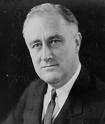 The initial appropriation for the WPA, perhaps the largest of Roosevelt’s New Deal “make work” programs that employed millions of people, cost 6.7% of US GDP.
The initial appropriation for the WPA, perhaps the largest of Roosevelt’s New Deal “make work” programs that employed millions of people, cost 6.7% of US GDP.